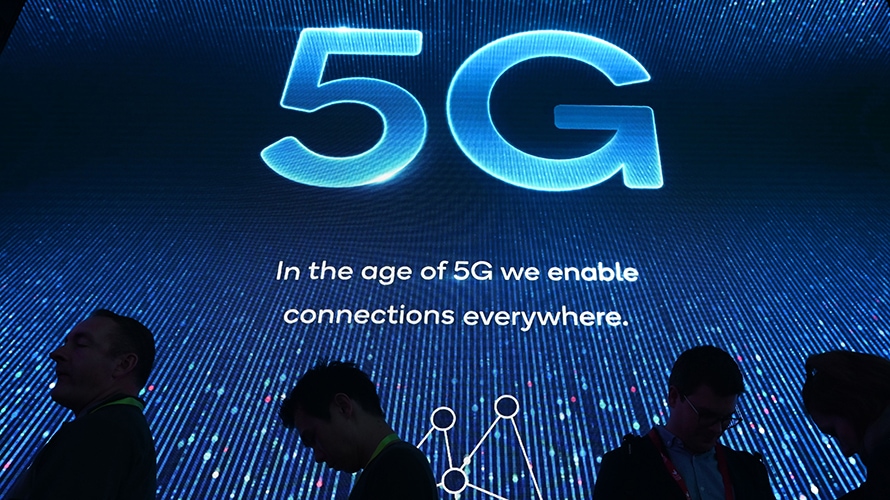5G news everywhere
In South Korea, the 5G story is the show-casing by the country’s top carrier, SK Telecom, of 5G-enabled smart factory systems in December 2018 that is intended to bring innovation to the manufacturing industry. Last week, the same company unveiled 5G-based initiatives on Smart Office, apparently in an attempt to whet the appetite of the […]

In South Korea, the 5G story is the show-casing by the country’s top carrier, SK Telecom, of 5G-enabled smart factory systems in December 2018 that is intended to bring innovation to the manufacturing industry. Last week, the same company unveiled 5G-based initiatives on Smart Office, apparently in an attempt to whet the appetite of the business world in advance of the company’s full-scale 5G network services slated for March 2019. The future office showcased will maximize productivity and create hassle-free working conditions.
SK Telecom’s Smart Office is the result of integrating various recent technologies, including artificial intelligence, augmented and virtual reality, and Internet of Things (IoT). The company has installed IoT sensors at locations such as the ceilings and corridors of an office to collect data on variables like brightness, relative humidity, and temperature, which are delivered to servers – probably in a cloud environment – in real time, allowing automatic control of, say, air conditioners in the office.
The company also unveiled the 5G “walking-through system,” which is integrated with image analysis and the deep learning technology, enabling workers to enter the office without a pass or fingerprint recognition. The 5G virtual desktop infrastructure docking system was also unveiled last week. By connecting workers’ smartphones to a docking pad, the system enables the workers to do their work even if they do not have a laptop or desktop PC. Also unveiled is the 5G Cafeteria, which is artificial intelligence-powered and works with a robot barista.
Investors in China are enthused on anything 5G. The reason for this, which is rather ironic, appears to be related to the problems that Huawei Technologies is having with US law makers, the EU, and other Western countries that are bent on preventing Huawei from bidding for 5G projects in their countries. Before Huawei’s CFO Meng Wanzhou, the daughter of the company’s founder was detained in Canada early December 2018 for Huawei allegedly violating US sanctions on Iran, telecom stocks in China were virtually dormant. It appears that many in China see the detention of Wanzhou as another attempt by the US to thwart China’s progress in 5G.
It is now common knowledge that many countries in the Western world are giving Huawei the cold shoulder. Even those countries – such as the Czech Republic – that were buddy-buddy with Huawei are becoming very hostile to the company in matters concerning 5G. The reason for this is not far-fetched: the stakes in terms of national security are going to be exponentially high for a country because 5G will change the whole way that societies function. The 5G is not simply a matter of faster download times relative to 4G, the system is designed to be far more than that, linking everything from the cars you drive to the hospitals you visit, in a way that you probably still cannot imagine. The connectedness involved in IoT implies a potentially severe security risk for a country.
Against this backdrop is the widespread allegation of intellectual-property stealing by Huawei, coupled with China’s requirement that all Chinese companies be completely “accessible” to the Chinese government in terms of the data they keep. The promise of the 5G technology will easily make this an ominous prospect that is simply unacceptable to countries whose leaders know what they are doing.
According to an article written by Shuli Ren in the Korean Herald newspaper on 14 February 2019, Huawei’s woes “have only served to spark Chinese investor enthusiasm for anything 5G.” The article continues: “On December 7, 2018, the (Chinese) Ministry of Industry and Information Technology awarded 5G spectrum licenses to its three telecom operators, allowing them to conduct final trials before widespread commercial rollout.
As a consequence, the shares of China’s state-owned company called China Tower and of other wireless and antenna-making companies have gone through the roof. China Tower, who has a monopoly on mobile phone masts in China, has seen its gain grow by more than 40 percent in Hong Kong between early December 2018 and last week Friday, bringing the market capitalization of the company to $37 billion. Also, the value of the Hong Kong-listed Comba Telecom Systems Holdings has reportedly jumped by more than 70 percent in the past month.
Incidentally, investors desiring to tap into the 5G wave in China may not be able to buy into the biggest beneficiaries of the boom, such as Huawei, which otherwise provide excellent exposure because they produce large equipment. Huawei is a private company, so it provides no direct avenues for investors to tap into the 5G boom in China. ZTE, which would also be a big beneficiary is publicly-traded but is unattractive for investment at this point because of the severe downturn being experienced by the company as a consequence of recent US sanctions and policies.
As China’s state-owned operators may not want to deal with so many suppliers, preferring instead to use a centralized procurement process that favors Huawei and ZTE, antenna/mast manufacturers and other 5G infrastructure parts suppliers will only be able to participate as third-parties that the two major primes outsource to, meaning that they will only get the “crumbs” from the looming 5G business in China. Another instance of winners-take-all will certainly be at play.
